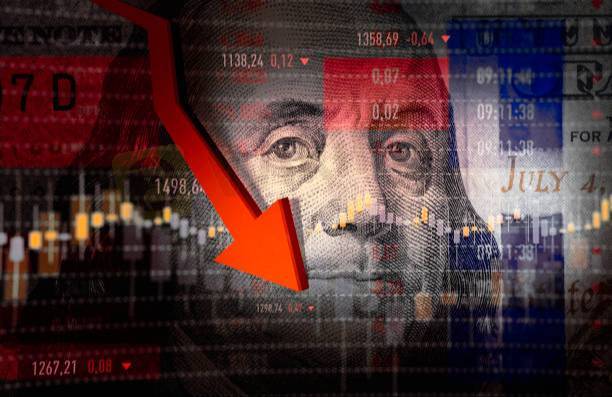
2025-02-17 18:37
IndustriFinancial Market Bubbles and Crashes
#firstdealofthenewyearastylz
Financial Market Bubbles and Crashes
Financial market bubbles and crashes are extreme fluctuations in asset prices, where values surge well beyond their fundamental worth before collapsing suddenly. These events are often fueled by speculation, investor sentiment, and broader market forces rather than actual economic fundamentals.
Understanding Market Bubbles
A bubble forms when asset prices increase rapidly due to excessive speculation, often influenced by:
Overconfidence: Investors assume prices will continue rising indefinitely.
Easy access to credit: Low interest rates and lenient lending encourage risky investments.
Crowd mentality: Investors follow trends without assessing underlying value.
Emerging industries: New markets, such as tech or cryptocurrency, attract speculative interest.
What Causes Market Crashes?
A market crash is a sudden and severe drop in asset prices, usually following a bubble burst. Key triggers include:
Mass panic selling: Investors offload assets quickly to avoid further losses.
Economic downturns: Weak economic indicators erode investor confidence.
Regulatory shifts: Policy changes can disrupt market conditions.
External events: Financial crises, wars, or pandemics can cause widespread sell-offs.
Notable Historical Examples
Tulip Mania (1637): Dutch tulip prices soared before dramatically collapsing.
South Sea Bubble (1720): Excessive speculation in the South Sea Company led to financial disaster.
1929 Stock Market Crash: Overvaluation and speculation triggered the Great Depression.
Dot-com Bubble (1999-2000): Unjustified enthusiasm for internet companies resulted in a massive sell-off.
2008 Global Financial Crisis: Housing market speculation and risky financial products caused an economic meltdown.
Key Takeaways
Diversification minimizes risk: A balanced portfolio helps withstand market volatility.
Fundamentals matter: Investing based on real value reduces exposure to speculative bubbles.
Market cycles are inevitable: Studying past crises can help identify warning signs.
Suka 0

Olywhtye
Pialang
Diskusi populer
Industri
СЕКРЕТ ЖЕНСКОГО ФОРЕКСА
Industri
УКРАИНА СОБИРАЕТСЯ СТАТЬ ЛИДЕРОМ НА РЫНКЕ NFT
Industri
Alasan Investasi Bodong Tumbuh Subur di Indonesia
Industri
Forex Eropa EURUSD 29 Maret: Berusaha Naik dari Terendah 4 Bulan
Analisis pasar
Bursa Asia Kebakaran, Eh... IHSG Ikut-ikutan
Analisis pasar
Kinerja BUMN Karya Disinggung Dahlan Iskan, Sahamnya Pada Rontok
Klasifikasi pasar

Platform

Pameran

Agen

Perekrutan

EA

Industri

Pasar

Indeks
Financial Market Bubbles and Crashes
 Hong Kong | 2025-02-17 18:37
Hong Kong | 2025-02-17 18:37#firstdealofthenewyearastylz
Financial Market Bubbles and Crashes
Financial market bubbles and crashes are extreme fluctuations in asset prices, where values surge well beyond their fundamental worth before collapsing suddenly. These events are often fueled by speculation, investor sentiment, and broader market forces rather than actual economic fundamentals.
Understanding Market Bubbles
A bubble forms when asset prices increase rapidly due to excessive speculation, often influenced by:
Overconfidence: Investors assume prices will continue rising indefinitely.
Easy access to credit: Low interest rates and lenient lending encourage risky investments.
Crowd mentality: Investors follow trends without assessing underlying value.
Emerging industries: New markets, such as tech or cryptocurrency, attract speculative interest.
What Causes Market Crashes?
A market crash is a sudden and severe drop in asset prices, usually following a bubble burst. Key triggers include:
Mass panic selling: Investors offload assets quickly to avoid further losses.
Economic downturns: Weak economic indicators erode investor confidence.
Regulatory shifts: Policy changes can disrupt market conditions.
External events: Financial crises, wars, or pandemics can cause widespread sell-offs.
Notable Historical Examples
Tulip Mania (1637): Dutch tulip prices soared before dramatically collapsing.
South Sea Bubble (1720): Excessive speculation in the South Sea Company led to financial disaster.
1929 Stock Market Crash: Overvaluation and speculation triggered the Great Depression.
Dot-com Bubble (1999-2000): Unjustified enthusiasm for internet companies resulted in a massive sell-off.
2008 Global Financial Crisis: Housing market speculation and risky financial products caused an economic meltdown.
Key Takeaways
Diversification minimizes risk: A balanced portfolio helps withstand market volatility.
Fundamentals matter: Investing based on real value reduces exposure to speculative bubbles.
Market cycles are inevitable: Studying past crises can help identify warning signs.
Suka 0
Saya juga ingin komentar
Tanyakan pertanyaan
0Komentar

Belum ada yang berkomentar, segera jadi yang pertama

Tanyakan pertanyaan
Belum ada yang berkomentar, segera jadi yang pertama